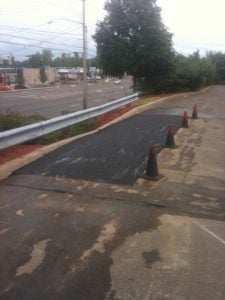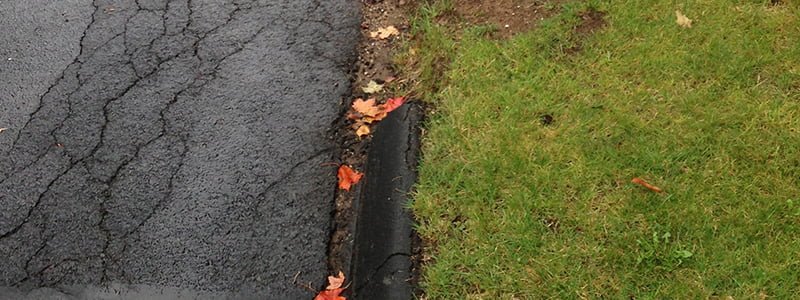Snow removal is a necessity for any region with mild to harsh winters. But, while snow removal is essential and lifesaving, it can also have some frustrating effects on your asphalt.
Unfortunately, any piece of equipment that scrapes against your pavement surface can damage it. Where your pavement will see the most damages from snow plows is on uneven surfaces (pavement with higher areas, or sudden grade changes). Flat surfaces are usually left undamaged by a plow.
The best way to prevent damages to your asphalt associated with snow removal services is by hiring a professional. Using snow plows incorrectly or carelessly can result in much larger damages to your asphalt than necessary, like completely scraping off the top surface of your asphalt.
Experienced snow removal companies will likely use one of two methods to avoid asphalt surface damage when plowing:
- Use a rubber or polyurethane cutting edge on the blades of their plow to lessen the impact it will have on your asphalt driveway
- Set their plow blades to ½” above the surface
 It is important to remember that these safety methods will likely leave a little dusting/excess amount of snow on your asphalt surface. But, it is vital in helping to avoid asphalt damages.
It is important to remember that these safety methods will likely leave a little dusting/excess amount of snow on your asphalt surface. But, it is vital in helping to avoid asphalt damages.
Another common area of damage seen after plows come through your parking lot is broken/damaged curbing. This is often a result of visibility issues. A great way to avoid major curb damage is by placing markers along the curb, pathways, and landscaped areas, so snow removal services are aware of areas to avoid.
While snow removal may create the need for some pavement repairs, the biggest culprit of winter pavement damage is the freeze-thaw cycle. With constant fluctuations of temperatures in winter, moisture is continually freezing and melting, and thus contracting and retracting. When water freezes and contracts inside pavement cracks, it can stretch pavement further than it can stand, leading to larger cracks and potholes. To find out exactly how potholes are formed visit our blog, Asphalt Pothole Repair: Potholes Explained.
Another “necessary evil” of winter is the use of deicers. While they are important in keeping your walkways and roads safe, they can lead to some pavement defects. For more information on this visit our blog, How Does Rock Salt and Deicer Affect Asphalt?
Unfortunately, if you live in areas that experience cold and snowy winters (like CT) you will likely see some damages to all exterior elements. Because of this, spring maintenance and repair should be a regular part of your home/property maintenance “to do list”. While these repairs are inevitable and important, being prepared going into winter can help to determine just how much repair you may need come spring. The more prepared you are, the less your repair bill will likely be (depending on the severity of winter, of course)! Learn how to prepare your home, property and particularly your pavement for winter at the links below, and when you are ready for spring asphalt repairs don’t forget to call EastCoat Pavement Services!
Prepare Asphalt For Winter: Crack Filing, Patching, Blacktop Sealer
An Invisible But Vital Aspect Of Parking Lot Paving
Why Fall Is The Best Time For Crack Filler Services
Is Asphalt Repair Cost Effective?
Benefits Of Asphalt Sealer


